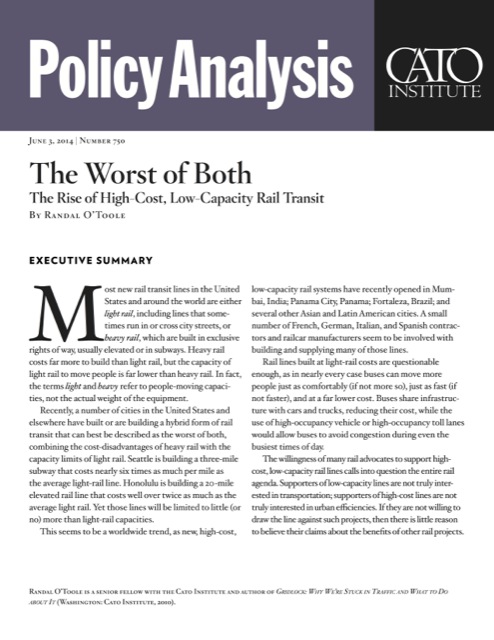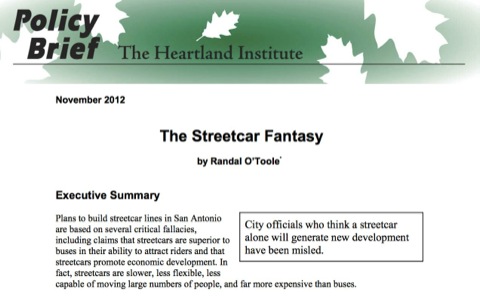John Naviaux, an undergraduate student at UC Irvine, compared the greenhouse gas benefits of getting people out of their cars and onto buses and found that, while it saved a little carbon dioxide, it wasn’t worth the huge subsidies required. As his faculty mentor, David Brownstone, comments, “there are no significant CO2 emissions benefits from moving a traveler from a personal automobile to an Orange County urban bus. This is a strong negative result since the Orange County bus fleet is among the cleanest in the world with almost all buses running on natural gas, and this shows that it will be difficult to reduce CO2 emissions in the U.S. by simply getting more people to use urban mass transit.”
The Antiplanner has the highest respect for Dr. Brownstone, but there may be a couple of problems with Naviaux’s paper. First, he counted all the subsidies to bus transit against the savings in greenhouse gas emissions. Transit advocates would be quick to point out that there are supposedly other benefits from transit, so greenhouse gas reductions are merely the icing on the proverbial cake.
Even if you don’t buy this argument–and the Antiplanner thinks the social benefits of transit are a lot smaller than many transit advocates claim–Naviaux compared the average emissions from cars with the average emissions from existing buses and the average subsidies from running those buses. But many conceivable bus improvements could significantly increase average bus occupancies at a very low marginal cost.









